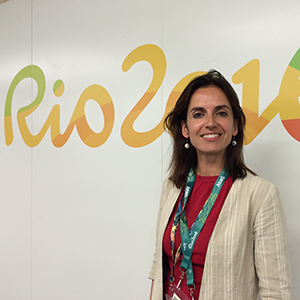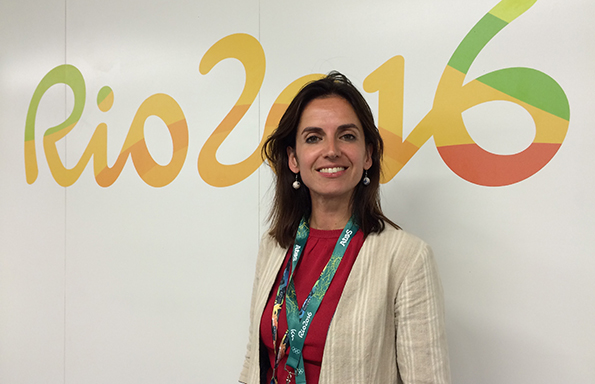
Dr Beatriz Garcia, Co-Director of the University of Liverpool’s Institute of Cultural Capital (ICC), is in Rio de Janeiro with an all access pass, as part of her academic role assessing the Games’ cultural legacy.
Opening Ceremony
The Rio 2016 Opening Ceremony operated a budget a third the size of London’s in 2012, which in itself was a considerable reduction on Chinese spending at Beijing 2008. This meant Brazilian organisers needed to maximise resources and find alternative, more affordable ways to create a spectacle.
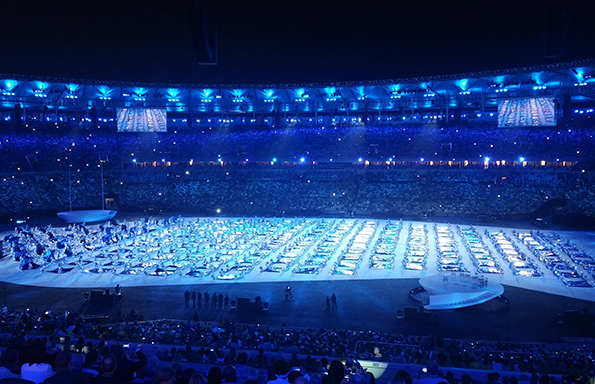
Fortunately, Brazilians have enormous capacity to make something out of nothing. This was a constant throughout preparation for the Games, particularly the cultural components which were delivered with near zero budget. Look above and below at a segment of the Opening Ceremony where beautiful shapes where created by simply moving sheets of shiny plastic.
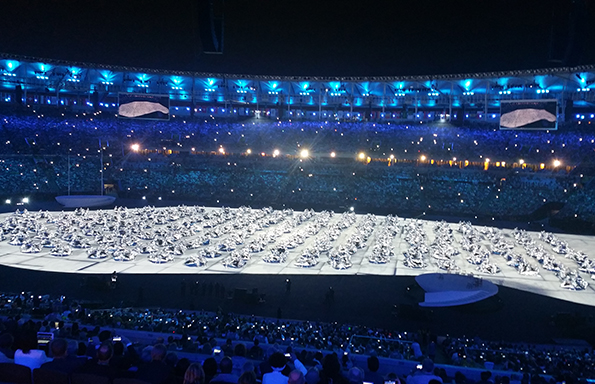
The Ceremony also incorporated various memorable messages unique to Brazil, such as its vision of itself as the garden of the planet ravaged by peoples’ arrivals, excessive urbanisation and unsustainable ways of living. It was the first time such strong messages featured in an Opening Ceremony, which included a full segment dedicated to warning about the dangers of excess carbon dioxide emissions and climate change.
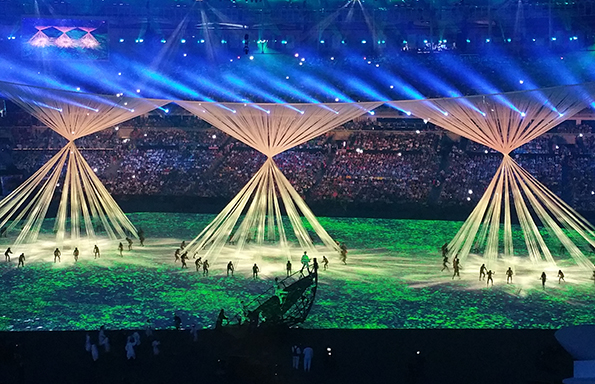
Special art interventions
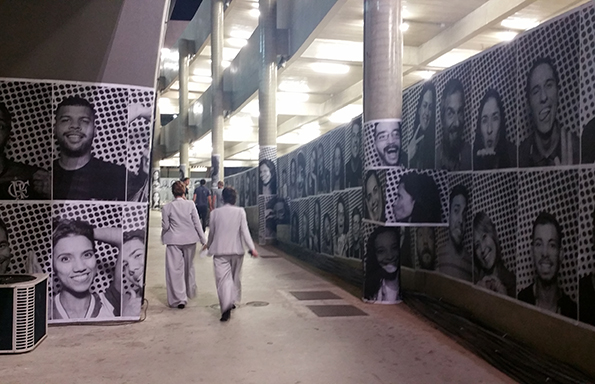
For the first time, the International Olympic Committee (IOC) commissioned artists to present their work during the Games to establish a clear conversation between sporting and artistic excellence. French artist JR has been making interventions throughout the city; from large scale photo sculptures to the very popular project Inside Out, where photographs of people are created and used to cover full buildings.
Cultural regeneration in the city
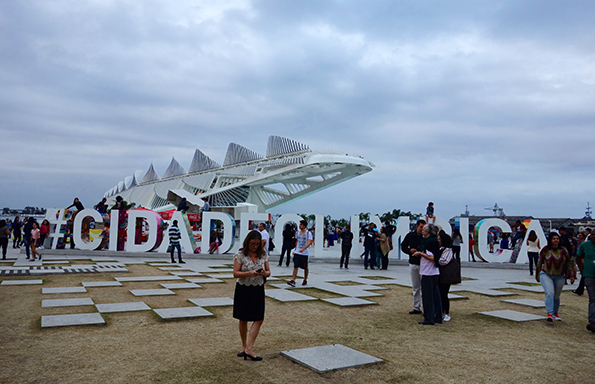
Most sporting activities take place in a range of Olympic Parks, away from the city centre. But the party is happening at the heart of Rio and the Olympic Games has been used as a catalyst to create new public spaces available for mass gatherings and celebration. The old industrial port close to the city centre, Pier Maua was considered a dangerous no-go area for decades but has been fully revitalised and transformed into a new space for cultural activity. This will be one of the most important cultural legacies of the Games, including a new iconic venue by ‘star-architect’ Santiago Calatrava – the Museum of Tomorrow.
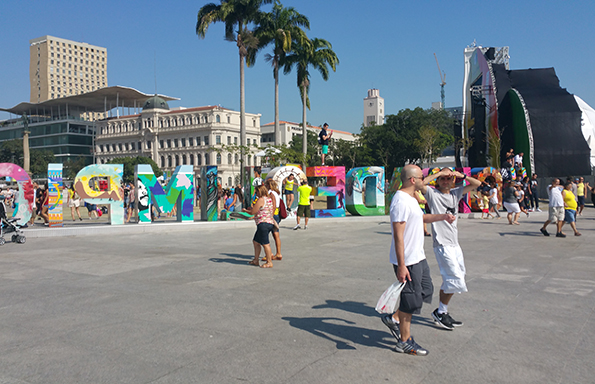
During Games time, this area acts as the Olympic Boulevard and is considered the largest ‘LiveSite’ to have been created for an Olympic Games since the tradition started at Atlanta 1996. It is the base for large screens that broadcast sport competitions, as well as cultural events, for those who have no tickets but want to gather and have a party.
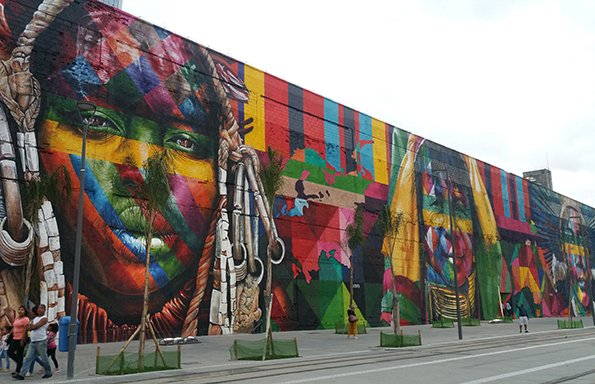
The Boulevard includes a large piece of graffiti by Brazilian artist, Kobra which has picked up a Guinness World Record for the largest graffiti produced by a single artist. The artwork displays five large faces representing the five continents. It is one of many art contributions around the city inspired by the Games.
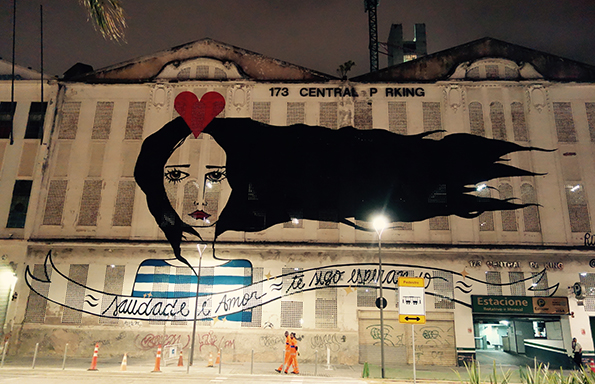
Other pieces of public art on display around Rio make a huge contribution to the attractiveness of each area.
Iconic sites around RIo
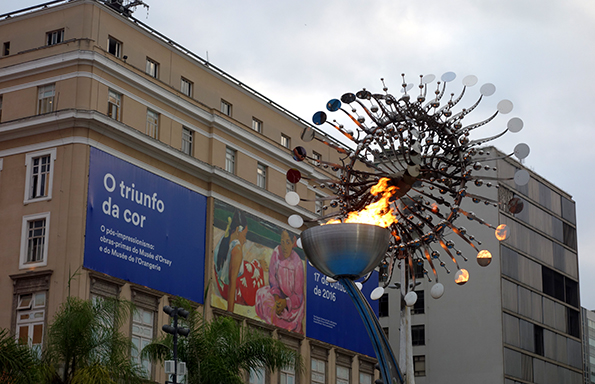
Rio followed the initiative of Vancouver’s Winter Games to become the first summer Olympic Games to place a copy of the Olympic Cauldron outside the stadium for everyone to access. This is an important gesture designed to extend access to the symbols and icons that most residents and visitors would like to experience.
The cauldron itself aims to make a point around reducing the size and scale of Olympic interventions. It is a small artefact, compared with previous cauldrons, which reduces the amount of emissions but enlarges the effect of the Olympic flame by incorporating a kinetic mirror sculpture to multiply reflections. It has become one of the most sought after spots for selfies.
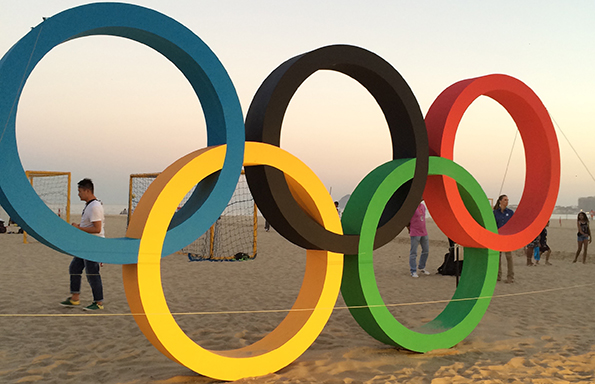
The Olympic rings on Copacabana beach are the other most sought-after spot for people’s selfies and pictures.
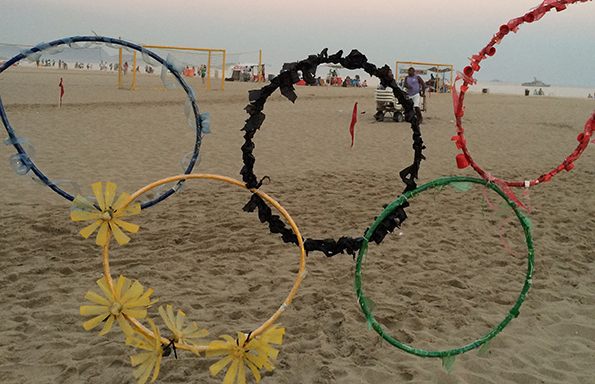
Other versions of the rings have been created by community projects and school initiatives.
The other side of the Olympics
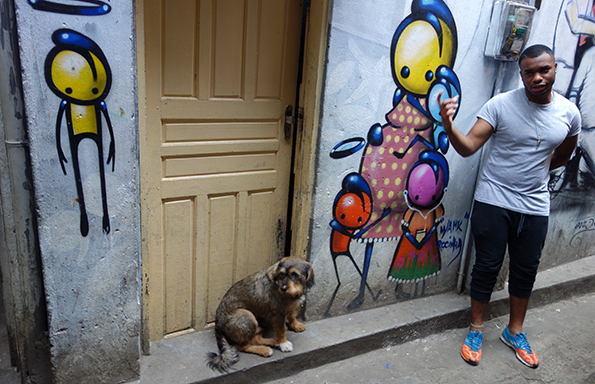
The favela of Rocinha is one of the largest and best located in Rio. The pacification process that has pushed the drug lords away has enabled greater government intervention in areas such as education – with the creation of the first large public Library in a favela – and the opening of a metro station, also a first for any favela.
Cultural life in the favelas is strong and there is a clear sense of community. Here, residents have been ambivalent about the Olympics. They recognise the benefit of having the library and the metro, and understand this has come about in part thanks to the Olympic Games city improvement planning. However they feel they have not been sufficiently involved in shaping or being represented within the Games’ cultural narrative.
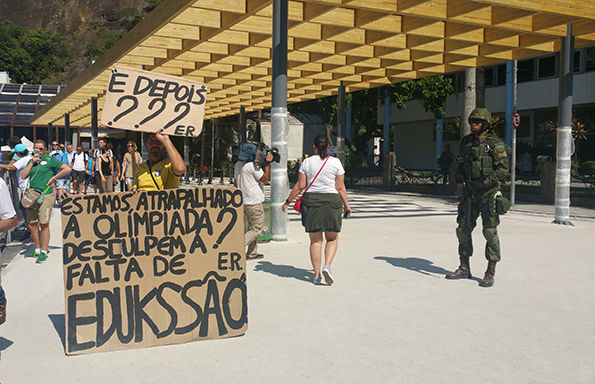
Activists have also taken to the streets to use the momentum generated by the Olympics, and accompanying global media, to take a stance and attract attention to ongoing or unresolved issues. This protester was located in the Sugar Loaf area (one of the city’s iconic sites) to coincide with the arrival of the Torch there, and make a point about lack of funding for education.
Dr Beatriz Garcia is reporting on her experience observing cultural programming and emerging legacies throughout the Games via the magazine Culture @ the Olympics (http://www.culturalolympics.org.uk). You can also follow Beatriz on twitter @beatriz_garcia
